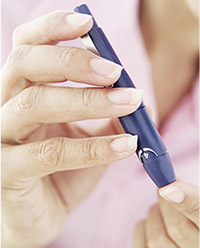Men need to be no less vigilant about their health than women. Recent studies have shown that many men put off going to the doctor even if they have symptoms. Others who “feel fine” consider themselves either invincible or too busy for a regular physical exam. Many serious conditions can be silent. Yet, if discovered early, they can be cured or controlled to prevent serious complications. One of the best ways to ensure a healthy future is to start taking preventive steps early in life. Follow these three steps to get you on the right track:
Step One: Regular Screenings
Health screening should begin at age 18 with a physical exam, followed by any specific tests requested by the doctor. Ask your doctor how often you should be seen for routine tests and screened for potential illnesses based upon personal and family history, age, ethnicity and other risk factors. Blood pressure, cholesterol, cancer (e.g. prostate, colon and testicular), diabetes, abdominal aortic aneurysm, mental health and HIV are all important to monitor. Don’t forget about dental, vision, hearing, immunizations and bone health.
Step Two: Know the Warning Signs
Listen to, look at and perform regular self-exams of your body. You are the best detective in between medical exams. If something seems out of the ordinary, tell your doctor. This can include unusual lumps, pimples or moles, discharges, persistent wounds, bloody nose, sore throat, leg swelling, joint pain, weight loss, impotence, changes in bowel or urination habits.
Symptoms of a heart attack, stroke and diabetes are important to recognize. Call 9-1-1 if you think you are experiencing symptoms of a heart attack or stroke.
- Heart Attack: The classic symptom is chest discomfort (i.e., pressure, squeezing, fullness or pain) that lasts more than a few minutes or that goes away and then returns. You might also experience discomfort in one or both arms, the back, neck, jaw or stomach. You may feel short of breath, sweaty, nauseous or lightheaded.
- Stroke: Signs of a stroke may include numbness or weakness of the face, arm or leg, particularly on one side of the body. You might also experience confusion, difficulty speaking or understanding, visual problems, trouble with balance or severe headache.
- Diabetes: Type 2 diabetes is usually adult onset, and does not always have symptoms. You may experience frequent urination, unusual thirst, extreme hunger, weight loss, extreme fatigue, irritability, frequent infections, blurred vision, slow-to-heal cuts or tingling/numbness in your hands or feet. Report these symptoms to your healthcare provider.
Step Three: Healthy Lifestyle Choices
The lifestyle choices you make can have a profound impact on your health today and in the future. Maintain a normal weight. Eat a healthy diet including fresh vegetables, fruits, whole grains, high-fiber foods and lean sources of protein, such as fish. Limit your consumption of alcohol. Don’t smoke; if you do, talk to your healthcare provider or pharmacist about how to quit. Exercise regularly. Drive safely and follow the rules of the road. Engage in safe sexual practices and seek mental health assistance should you need it.
The most important way you can take care of yourself is to be actively involved in all aspects of your healthcare.




 And Other Power Foods >
And Other Power Foods >